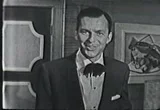“One of the best resource books I’ve found for writers.”
Last week, I started sharing sections of the chapter "The Steps of a Trial, From Jury Selection to Verdict" from A Lawyer's Primer for Writers: From Crimes to Courtrooms, a nonfiction book I co-wrote with Shaun Kaufman, my husband and criminal defense lawyer. This chapter provides a high-level overview of the steps of a trial.
In Part I, we discussed some history of trials and provided a glossary of common trial terms. This week we continue with jury selection and opening arguments. Other chapters in A Lawyer's Primer for Writers go into more depth about topics such as jury experts, the players in the courtroom, trial preparation, criminal charges, the courtroom setting, and more.
Chapter 15: The Steps Of A Trial - Selecting a Jury and Opening Arguments
All Rights Reserved. Copyright Colleen Collins
1. Selecting a jury
Jury box, Howard M. Metzenbaum U.S. Courthouse, Cleveland, Ohio by Carol Highsmith (image is in the public domain)
The voir dire, or jury selection process, requires input from attorneys for both sides, as well as the judge.
The judge and attorneys, after being given limited information about each potential juror, ask the potential jurors questions, the goal being to eliminate those who might be biased toward one side or the other during the trial.
After questioning is over, the attorneys and judge meet privately to pick the jury for the trial. Some of the jurors are removed for cause, which means a juror has something in his/her past experience that may not allow them to be fair and impartial to both parties. Example of cause include if a juror personally knows one of the lawyers, or has been a victim of a crime similar to one being tried, or has a personal interest in the outcome of the case. Each side has an unlimited number of removals for cause.
Other potential jurors may be removed by peremptory strike, meaning each side can remove a certain number of jurors from the pool without giving a reason, although they cannot be eliminated based on race or gender. The number of preemptory strikes depends on the jurisdiction and type of crime.
As an example, the following defines the number of strikes in federal trials:
- Federal civil trial: Each side is allowed 3 peremptory strikes.
- Federal criminal trial: The government’s prosecuting attorney gets 6 strikes and the defense attorney gets 10 strikes. In capital cases where the death penalty is considered, both sides get 20 strikes.
- Federal misdemeanor trial (a minor crime punishable by a fine or less than a year in prison): Each side gets 3 strikes.
After all potential jurors have been removed via cause and preemptory strikes, the jury is selected, which is often referred to as the jury being empaneled. After the courtroom deputy clerk swears in the jurors, and the judge gives them initial instructions, the trial can begin.
There might also be one or more alternate jurors, who are selected in the same manner as regular jurors, and hear the evidence in a case along with the regular jurors, but they do not participate with the regular jurors when they decide the case unless called upon to replace a regular juror.
Note: Jury research has become more common, especially in high-profile trials, as attorneys retain professional jury experts to aid assessment of appropriate jurors. Chapter 14, Jury Experts, provides more information on this subject.
2. The lawyers present opening arguments
"The Jury" by John Morgan, 1861 (image is in the public domain)
During opening arguments, each side tells the jurors about the case they will be hearing. Opening statements must be confined to facts that will be proven by evidence and cannot be argumentative.
Whichever party brought the case to court — the government in a criminal prosecution or the plaintiff in a civil case — is the first to give its opening statement. Either lawyer may choose not to present an opening statement, or may reserve to give it during the defense’s presentation of evidence.
In a criminal trial, the burden of proof rests with the government, which must prove beyond a reasonable doubt — meaning, the jurors must be solidly convinced, or have a moral certainty — that the defendant is guilty.
In a civil trial, the plaintiff has the burden of proof, and in general must prove liability and damages by a preponderance, or a greater weight, of the evidence — meaning, there is evidence that is convincing in its probable truth or accuracy. The degree of proof required in a civil case is far less stringent than in a criminal case.
Tip for Writers: An opening statement is supposed to only contain a preview of what the lawyers think the evidence will be. However, a clever lawyer might push the envelope to make his or her opening statement as dramatic and compelling as a closing argument. The most powerful opening statements are those that employ common human themes and fables — think tropes in storytelling — which provide a framework within which the evidence will be arranged.
This ends Part II. The next post covers witnesses and evidence, closing arguments, the verdict, and additional online resources.
All rights reserved by Colleen Collins. Any use of the content, including images owned by Colleen Collins, requires specific, written authority. Please do not copy or distribute any images noted as licensed; any images noted as being in the public domain are yours to use.
Click on book cover to go to Amazon page








